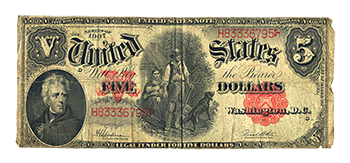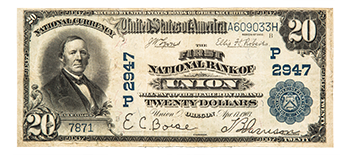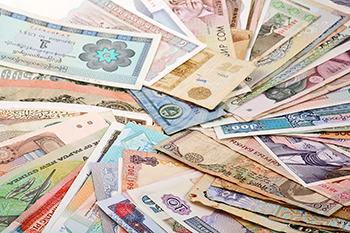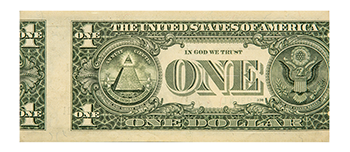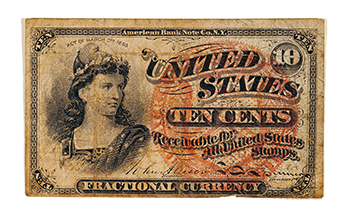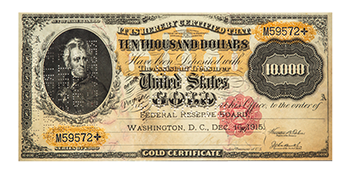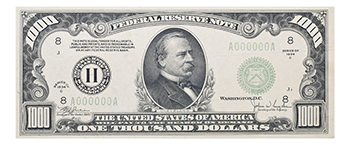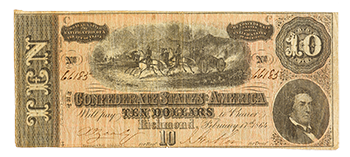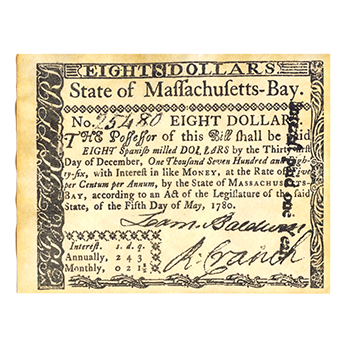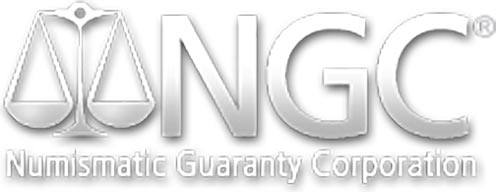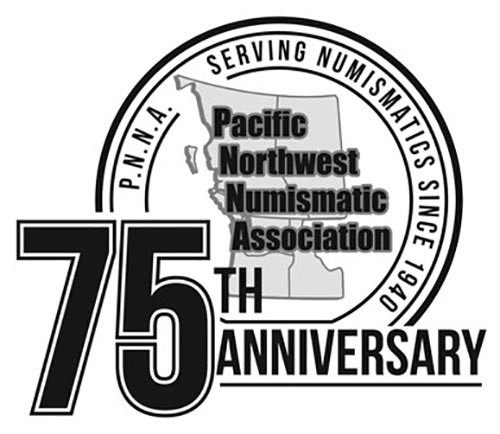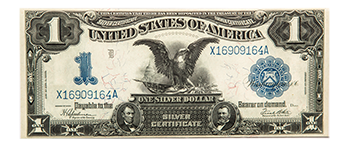
Issued from 1861 until 1928, these notes come with unique themes, intricate details, and sizes significantly bigger than today’s currency, which is why they are nicknamed “horse blankets.” Large notes have significant differences that are easy to spot. For one, they’re big. Also, large notes have two serial numbers and four signatures including the local bank’s cashier and president. It is common for the top and bottom edges of the note to be uneven because they were often cut by hand.
In 1928, bill sizes were standardized. Regardless of denomination, modern currency is 2.61 inches wide, 6.14 inches long, and 0.0043 inches thick.

